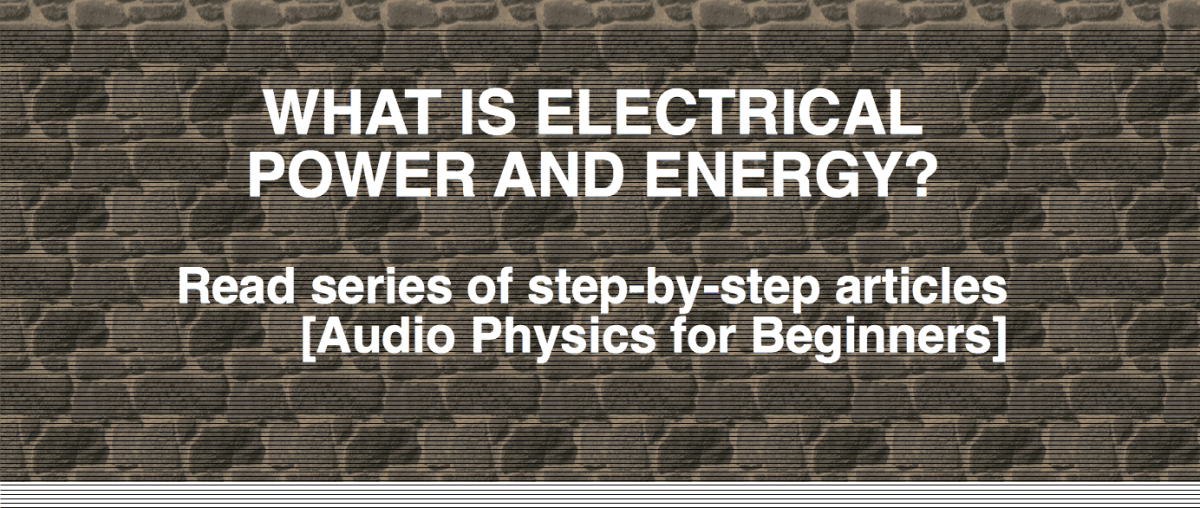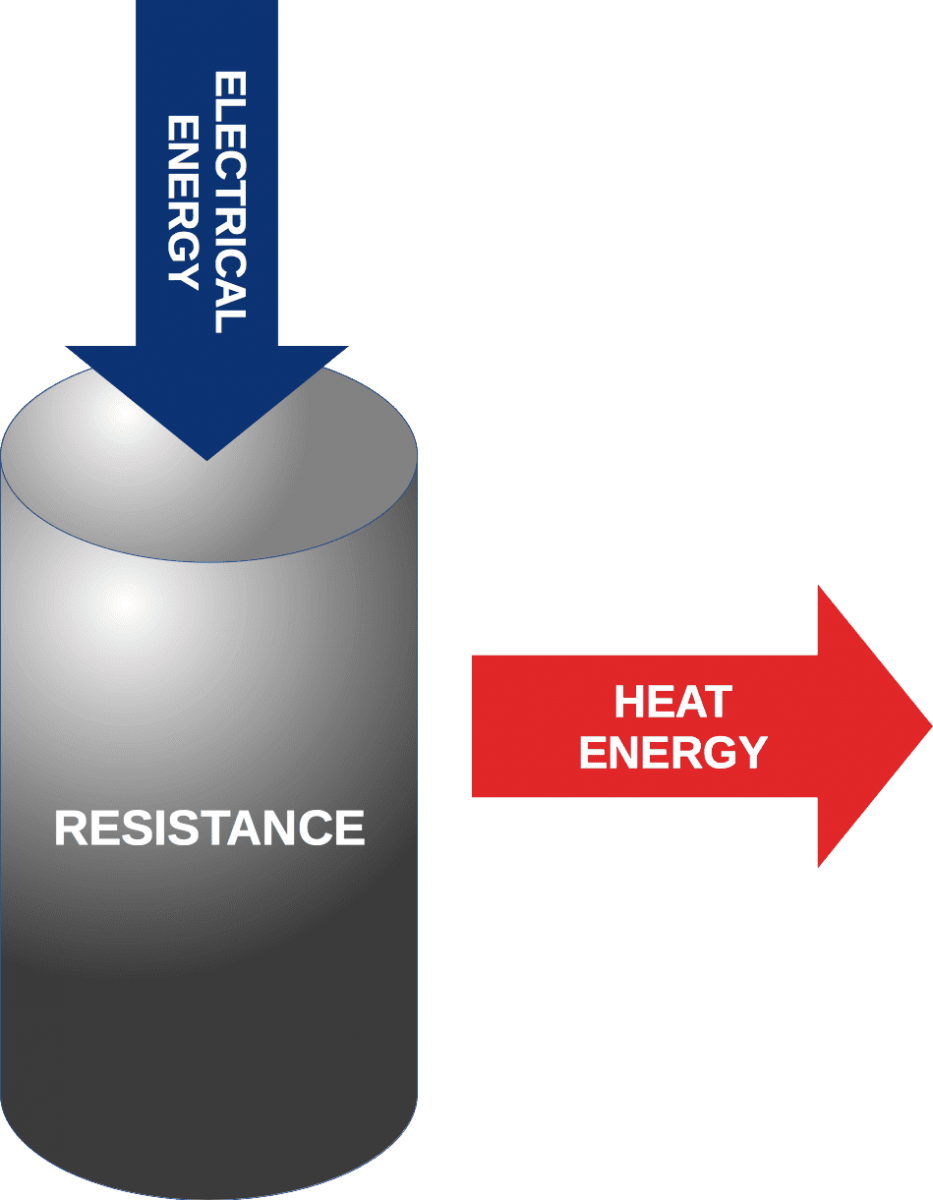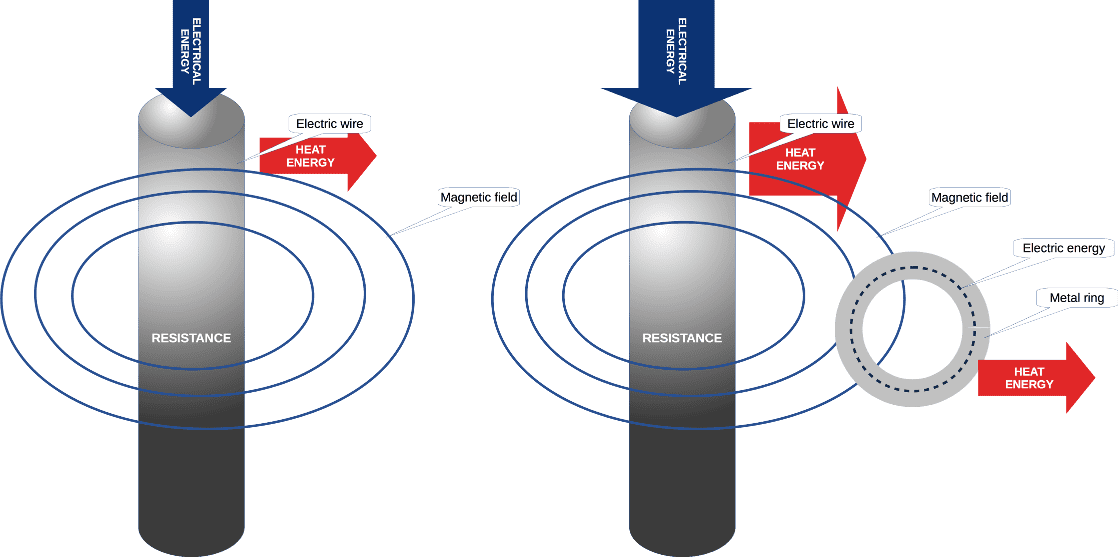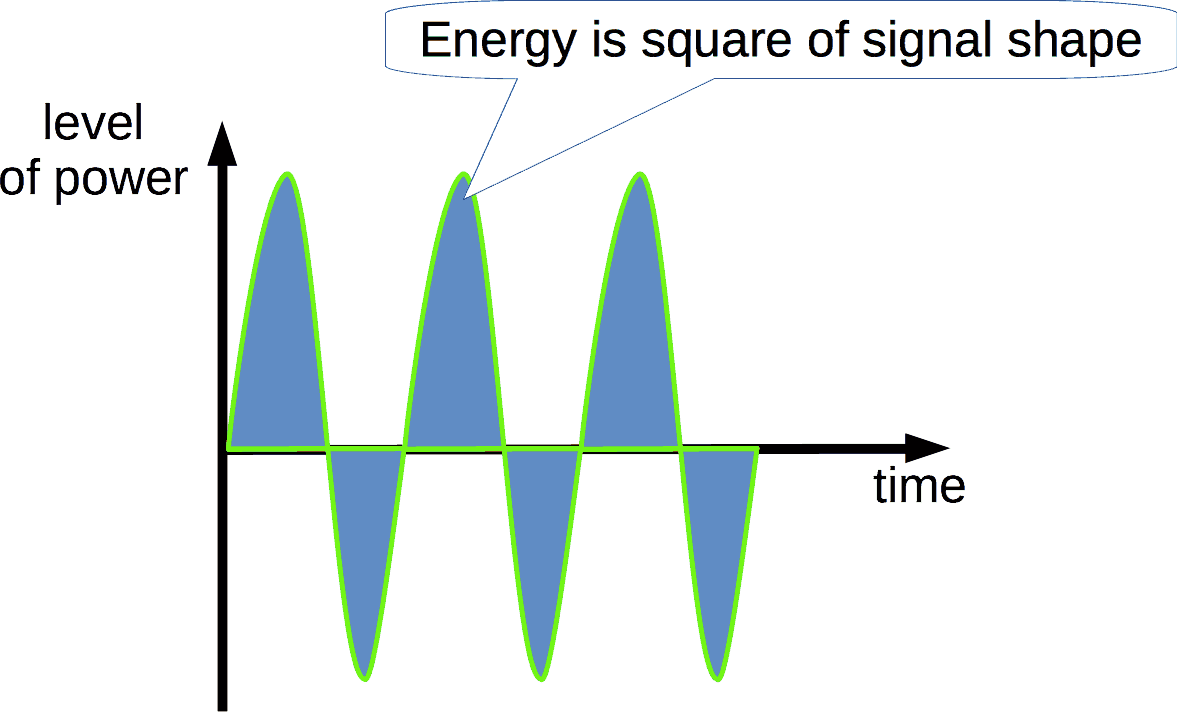Audio Basis - articles about audio
Electrical power is electrical energy per second. Read below how power, energy, voltage, current, resistance are related. Keep reading...

If you buy "AuI ConverteR PROduce-RD" (2023/12.x version) from 24 August 2023 to 24 October 2023, you will get free update to version 2024 (13.x) after its release.

Electrical energy and thermal energy
In electrical devices, the energy is converted to other types of energy: mechanical, light, others. The rest of the electrical energy is converted to thermal energy via resistance. Practically, a significant part of the electrical energy is wasted on heat.
Electrical energy in many cases is converted to the thermal one
When we reviewed voltage we discuss that voltage is potential, which can cause the movement of charged particles (electrons).
- When charged particles are under voltage, they have potential energy.
- When no voltage, the particles have no electrical energy.
- When the particles move under voltage, they have kinetic energy (energy of movement).
Electrical energy and magnetic energy
The electric energy, that moves through a wire (conductor), generates magnetic energy.
But the electric energy will be consumed, if a closed wire loop is placed in the magnetic field of the conductor. As example, a metal ring is placed about this wire.
Electrical energy converted to magnetic energy
The current in the ring flow inside the metal ring and energy is consumed from the electric wire via the magnetic field.
Consuming the electrical energy (and current respectively) in the electric wire is increased. More current - more energy is lost at the electric wire for heat.
Graphical presentation of electrical energy
The energy of the audio signal is considered as a square of signal shape.
Graphical presentation of electrical energy
Electrical power and energy formula
Power is called P.
Energy is called E.
Power is the energy per second.
P = E / t, where
t is time.
Power is calculated in several ways:
P = U * I
P = U2 / R
P = I2 * R,
where
U is voltage,
I is current,
R is resistance.
Electrical power types
DIN
DIN POWER is a value of sine power:
- on frequency 1000 Hz
- during 10 minutes and
- non-linear distortions (THD) at audio unit output lesser 1%.
RMS
RMS (Rated Maximum Sinusoidal) is maximal sine audio power when audio unit is capable to work:
- on frequency 1000 Hz and
- during 1 hour and
- without damage.
PMPO
PMPO (Peak Music Power Output) is maximum sine audio power when an audio unit is capable to work:
- on frequency lesser than 250 Hz (as rule, 100 Hz) and
- during 1 second and
- without damage.
DIN POWER < RMS < PMPO
How to convert PMPO to RMS power?
There is no universal method to convert PMPO to RMS safely.
Theoretically, if you know exactly PMPO's measurement conditions for a given device, you can calculate PMPO energy and calculate the power with the same energy but during 1 hour. It will be like RMS.
But, for calculated RMS, the cooling abilities of the device and its resistance to the temperature may cause damage issues. And actual RMS should be lesser or, maybe, higher.
Audiophile Inventory's developer
Frequently Asked Questions
What is the unit of electric energy?
Electrical enegry is measured in Joule or Watt × second/Watt × hour.
References
- Подробная расшифровка некоторых характеристик акустики
- Особенности стандартов, описывающих мощность в звукотехнике
< Read about electrical resistance


